The Gift of South Dakota
Subscriptions to South Dakota Magazine make great gifts!
Subscribe today — 1 year (6 issues) is just $29!
Saving Our Native Prairie
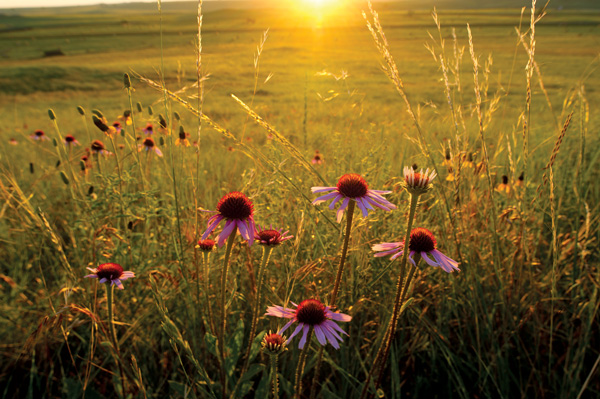 |
| Some ranchers protect native grasses for their exquisite beauty, but they also know of the prairie’s nutritional value. |
I sprawl in tall prairie grasses on the Missouri River bluff, and inhale the purity of the universe. Big bluestem, Indian and switch grasses, still lustrous in winter, waltz in the wind six feet above my head. In their shadow glint purplish hues of little bluestem, the amber of sideoats grama and the drying heads of wild flowers.
From ground level this seems a vast jungle of grass, but in fact it is an isolated handful of acres, a remnant of the million square miles of wild prairie that 150 years ago stretched from Canada to Texas, including most of South Dakota. Two centuries ago Meriwether Lewis stood nearby and marveled at 3,000 bison in a single herd.
How did these grasses survive? The roots of prairie plants may reach 12 feet down, safe from drought and able to survive decades of overgrazing and chemical warfare. By weight, more than two-thirds of many native grasses are subterranean. In the 1930s, University of Nebraska ecologist Frederic Clements excavated a half-square-yard of prairie grass, and from the earth extracted 150 miles of root.
It would be a rare half-yard of earth that contained the roots of a single plant. More likely, in any scrap of native prairie, half a dozen grasses and forbs — broadleaf plants — would be in reach. That is by design. “The old prairie lived by the diversity of its plants and animals, all of which were useful because the sum total of their cooperations and competitions achieved continuity,” said Aldo Leopold in A Sand County Almanac.
The goal of modern farming is to replace that diversity with monoculture. Whatever is not corn or soybeans or the other chosen seed, is a weed. After 150 years of plowing, just two percent of the tallgrass prairie that once dominated eastern South Dakota remains, and the mixed and shortgrass prairies of our west are disappearing fast. Will we lose the last vestiges of wild prairie? Does it really matter? Is it possible to save some of what remains, and perhaps to restore and rehabilitate some of what we have lost?
In his autobiography A Son of the Middle Border, Hamlin Garland recalled his pioneering family’s arrival on the South Dakota prairie, and the first order of business: “At last the wide ‘quarter section’ lay upturned, black to the sun and the garden that had bloomed and fruited for millions of years, waiting for man, lay torn and ravaged. The tender plants, the sweet flowers, the fragrant fruits, the busy insects, all the swarming lives which had been native here for untold centuries were utterly destroyed.”
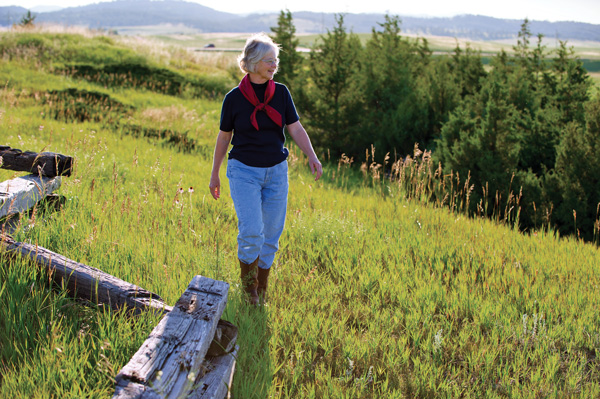 |
| Linda Hasselstrom developed an appreciation for native prairie while growing up on the family ranch near Hermosa. “A lot of people would die for the mountains,” she says. “What we need are people willing to die — or at least fight — for the prairies.” Photo by Greg Latza. |
In geological time, the age of America’s prairie is actually brief, a mere 10,000 years, the hundreds of grasses and flowering forbs evolving as the glaciers of the last ice age retreated. And yet in a fleeting fraction of that time, what nature wove has been undone. “The more we love this place as it is, the more we feel the pain of what it so recently was,” says Candace Savage in her book Prairie: A Natural History. “The wild prairie ecosystem is gone. And this tragedy is compounded by the realization that we don’t know exactly what it is that we have lost.”
In fact, the question wasn’t even asked until 1916, when Frederic Clements, focusing on the ability of native prairie to recover after fire, realized that prairie is a self-healing system, a community of plants and other organisms with regenerative power, the ability to reassert themselves, as Savage puts it, in an “orderly sequence, each wave creating the conditions required by the next, until the vegetation reached a stable configuration, or ‘climax’.” Clements recognized nearly a century ago what we today know as an “ecosystem.” But for regeneration to occur, modern man must provide minimal help — and then step aside.
My family and I arrived on the Missouri Valley bluff a century after the first settlers, Nels and Martha Oakland, took the land. Under terms of the Homestead Act, the Oaklands had five years to “prove up,” to plow so many acres and make other “improvements” to earn the land. About 1875, Nels hitched a one-bottom plow to a team of mules, and inch by inch, turned the waving heads of native diversity under. Even if he had wished to let the grasses grow and fatten his cows, he had no choice. The Homestead Act required that he plow his hilly land.
To pay interest on borrowed money and somehow survive on 160 acres of marginal land, the Oaklands no doubt took all the soil could give. Each season, inconsequential handfuls of topsoil washed away. Perhaps in his 37th and last spring, Nels’ plow still turned up darkish earth. Perhaps he didn’t know that the life-giving layer above clay and glacial debris had worn dangerously thin. But I suspect he knew that his generation was both a beginning and an end.
Thirty years ago we found the Oaklands’ hills depleted and eroded, producing imported grasses and weeds. One spring I stripped a handful of big bluestem seed, spaded a plot behind the home we’d built, and began a small experiment in prairie restoration. Two decades later we have restored 30 acres of prairie — in so far as that is possible — and are working to rehabilitate 30 more. And we are not alone. Alongside the rapid conversion of prairie to commodity crops, scores of South Dakotans are at work preserving and restoring native grasses and flowers.
Across the state, and particularly west of the Missouri River, conscientious ranchers still zealously protect the prairie. Perhaps some are motivated by the exquisite beauty of wildflowers in spring and the bronze and purple hues of prairie grasses in fall. Some protect native grasses and forbs because they know the plants that evolved on our sometimes unforgiving plains survive the fiercest cold and drought our climate can deal. But ranchers also know the superior nutritional value of native prairie for growing the most healthful meat.
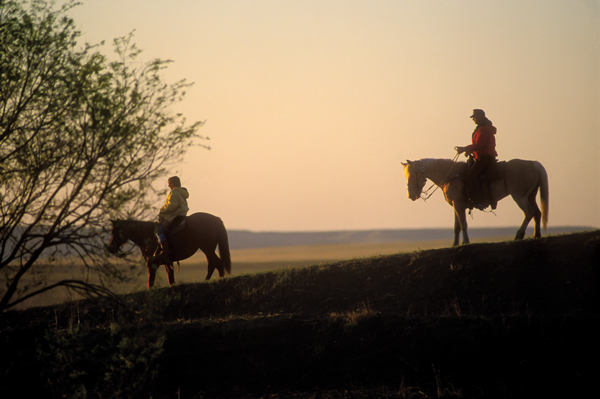 |
| The Mortensons have been rehabbing the native prairie for 60 years on their sprawling ranch northwest of Pierre. Cattle now graze where corn was grown. |
The prairie has many friends — ranchers whose grandfathers homesteaded the land and who would sooner cut off an arm than plow under the legacy of 10,000 years, scientists, soil conservationists, hunters and fishermen who know that prairie produces wildlife, and city folk who plant tiny scraps of prairie in their backyards because its beauty thrills.
Many South Dakotans are familiar with the books of Linda Hasselstrom and Dan O’Brien. Hasselstrom grew up amidst her father’s Herefords near Hermosa; O’Brien raises bison on his ranch by the Cheyenne River. Both honor and defend the prairie ecosystem and the ranching way of life. “A lot of people would die for the mountains,” Hasselstrom says in Going Over East. “What we need are people willing to die — or at least fight — for the prairies.”
On the Pine Ridge Reservation near Allen, the Lakota buffalo herd thrives on intact native prairie. On the Mortenson ranch northwest of Pierre, Todd, Jeff and Curt Mortenson raise cattle on native grasses they and their father, Clarence, have maintained in good health for many decades. Clarence began rehabilitating his ranch’s natural ecosystem 60 years ago, combating erosion with sediment-trapping dams and revitalizing native prairie with rotational grazing. Gradually native vegetation reestablished itself and wildlife returned. Ecologically-conscious management increased both profits and sustainability.
Recent decades have seen the flowering of numerous private organizations devoted to preserving native prairie. Ranchers and conservationists of the South Dakota Grasslands Coalition, for example, provide scientific information on the virtues of native ecosystems, the conservation and management of grazing lands, and ways to exploit the prairie’s economic potential without compromising its health. The South Dakota Art Museum in Brookings and the U.S. Fish and Wildlife Service raise money for prairie preservation by selling prints of Harvey Dunn’s famous painting, The Prairie Trail.
Among the prairie’s oldest friends is The Nature Conservancy, a nationwide organization founded in 1951 “to preserve the plants, animals and natural communities that represent the diversity of life on Earth by protecting the lands and waters they need to survive.” The largest South Dakota grassland under TNC management is the 7,800-acre Ordway Prairie, 50 miles northwest of Aberdeen.
The Ordway ecosystem includes over 300 plant species, says manager Mary Miller, from tall grasses and wetland species to short grasses on hilltops. Hillsides bloom with wildflowers from late spring through summer. Ordway’s fauna is also diverse, including badgers, ground squirrels, foxes, coyotes and 280 bison. TNC simulates nature’s management strategy, periodic controlled burns followed by grazing bison, a progression that for millennia kept prairie healthy. Surplus grass-fed bison are sold each year. Bio-control agents — insects that feed on specific invasive weeds — allow managers to limit chemical use.
The importance of the TNC preserve grows as surrounding prairie faces conversion to agriculture, heavy grazing pressure and invasive species. The preserve’s 400 wetlands provide nesting for thousands of waterfowl, shorebirds, grebes, rails and herons, while numerous grassland birds inhabit the mixed grass prairie.
Northern Prairies Land Trust takes another approach to preservation of native prairie and other vulnerable special lands. The non-profit conservation organization was established in 1999 to safeguard unique ecosystems of the Northern Great Plains by helping South Dakota and Nebraska landowners conserve lands for habitat preservation, agriculture, ranching, water, cultural and historical resources. NPLT has protected nearly 20,000 acres of unbroken tallgrass prairie in over 25 perpetual conservation easements.
Serious threats to the nation’s bird species highlight the urgency of conservation, says NPLT president John Davidson. According to a recent U.S. Interior Department report, nearly one-third of the nation’s 800 bird species are endangered, threatened, or in significant decline, including 46 grassland breeding birds, many of which depend on native grasslands for survival.
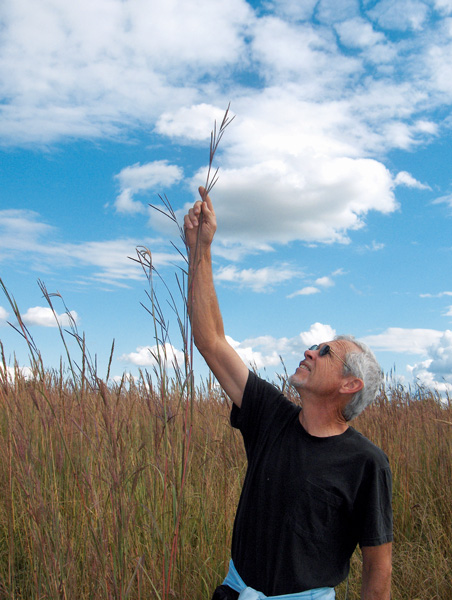 |
| Bluestem now grows on writer Jerry Wilson’s Clay County farm. He has restored 30 acres of prairie and is working on 30 more. |
Davidson also emphasizes the value of perennial grasses as “a stable repository of carbon. Grasses store carbon quickly,” he says, “providing an immediate mitigation against global warming.” Besides destroying habitat, plowing prairie releases stored carbon into the atmosphere.
Fortunately, protecting native grasslands can be financially profitable, since high quality grazing and hay production increase ranchers’ income. “The key to prairie conservation,” Davidson says, “is the sustainability of the ranching economy and culture.”
Private conservation and restoration efforts are assisted by federal entities like the Natural Resources Conservation Service, which pays landowners to restore grasses to floodplains and other marginal lands, and the National Forest Service, which 50 years ago set aside three sections of South Dakota’s shortgrass prairie as the Oglala, Fort Pierre and Buffalo Gap National Grasslands. Now Sen. Tim Johnson is taking the prairie protection effort to another level. If enacted, Johnson’s SB 3310 will designate 48,000 acres of the Buffalo Gap National Grasslands between the Badlands and the Black Hills as the first federal grasslands wilderness, in honor of outdoorsman and conservation advocate Tony Dean, who died in 2008. Wilderness designation provides long-term protection of a key ecosystem, while allowing multiple private and public uses to continue.
Noble and important as all these preservation efforts are, they may not be enough to balance the loss of prairie. Saving prairie also requires restoration, work that can occur on a landscape scale only if farmers and ranchers can make a living by replanting prairie while simultaneously freeing themselves and taxpayers from dependency on annual crop subsidies. That is what South Dakota State University ecology professor Carter Johnson and three colleagues hope to demonstrate on the EcoSun Prairie Farm southwest of Brookings.
The 640-acre project is funded by the Sun Grant Center at SDSU, whose mission is biofuels research. But Johnson and his colleagues have a broader mission, to demonstrate the economic and ecological sustainability of a working prairie farm. They leased the land from Bill Lee, curator of the Ag Heritage Museum in Brookings, who restored the big Case and other tractors at the museum and who still lives on the farm.
The farm was typical for the region — most of the wetlands drained, 400 acres in corn and soybeans, the rest in non-native pasture grasses. The Mortenson brothers will bring yearlings from their Stanley County ranch to the cool season pasture in spring, then move them to EcoSun’s native grasses in summer to produce grass-fed beef. The 400 acres of cropland are being restored to the native plants best suited to the particular terrain, hydrology and soil type of each field.
The idea was to develop “strategic mixtures,” diverse native species the conservationists think will have value for seed, pasture, hay or biofuels, and thus to maintain an income stream; if the price of one commodity is low, perhaps another will be up. Using their soil conservation district’s grass drill, researchers planted the first 60 acres of switchgrass and 40 acres of a 15-species bluestem mix in 2008. They also gathered 8,000 plugs of prairie cordgrass to plant three acres of wetland.
That fall professors and students hand harvested seed and started more cordgrass to transplant the next spring. In 2009 they added 30 acres of big bluestem and other warm-season native grasses and flowering forbs and renovated 10 acres of Conservation Reserve land. 2010 saw the largest planting, 150 acres, including 100 acres of mixed grasses and forbs, another 40 acres of renovated CRP and 10 acres of switchgrass. The last hundred acres of cropland will be converted this year, a mixture of at least 100 native species, using seed harvested from The Nature Conservancy’s remnant of unplowed prairie two miles away.
Progress is documented in several ways, including production records, a video taken from an ultra-light airplane, a feature-length documentary film produced by Carter’s sons, Tellef and Tor, and a time lapse video of the 40-acre mixed species field. One shot was taken every 20 minutes from June to September, so each three seconds of video illustrate 24 hours of growth and flowering.
A major economic advantage of perennial prairie grasses is that once established, annual inputs are minimal; typically no tillage, pesticides or fertilizer are required. Some plots may not gross as much as corn, but corn inputs can cost $400 per acre. The group can harvest switchgrass seed worth $3 per pound and four tons per acre of big bluestem hay worth up to $400.
To many farmers, wetlands are a nuisance to be drained. Johnson sees them as an opportunity. “Instead of draining and planting corn, we are planting things where they belong,” he said. “There are no sub-optimal conditions. We are using the water to grow harvestable wetland grasses instead of draining it toward the Gulf of Mexico full of nitrates.”
The U.S. Fish and Wildlife Service has helped fund restoration of the farm’s 35 small basins that had been drained into a 20-acre central wetland. The new managers plugged seasonal wetlands with berms, and by July of a typical year, most are dry. The large wetland, where prairie cordgrass stood 10 feet tall when I visited, also sub-irrigates the surrounding prairie. After cordgrass seed is harvested in November they bale the hay, up to 10 tons per acre. At $100 per ton the cordgrass hay could gross $40,000 from 40 sub-irrigated acres with very little input cost. The professors and research students also laboriously hand collect sedge, whitetop and other wetland plant seeds for sale to Millborn Seeds in Brookings, seeds that can retail for hundreds of dollars per pound.
The other big value of wetland restoration, of course, is wildlife habitat. The first wetland restored in 2008 attracted over a thousand ducks the first season, with lots of nesting. “Typically small wetlands are drained or farmed through or around and have little wildlife value,” Johnson said. “But they can produce a perennial crop of seed, hay or biofuel as well as nesting and wildlife habitat. It’s a win-win for everybody, and it also helps recharge the aquifer.”
Those engaged in prairie preservation and restoration know that the dream of complete natural rehabilitation is out of reach. Some species are gone forever, and some, lacking the deep-rooted hardiness of big bluestem or purple coneflower, hover on the brink of extinction and are difficult to reestablish. But necessity and desire are strong. Along with patience and humility, Mother Nature teaches persistence and hope.
Editor’s Note: Jerry Wilson, retired managing editor of South Dakota Magazine, lives near Vermillion. Prairie restoration is among the subjects in his book Waiting for Coyote’s Call: An Eco-memoir from the Missouri River Bluff, available online or from the S.D. State Historical Society Press. This story is revised from the March/April 2011 issue of South Dakota Magazine. To order a copy or to subscribe, call (800) 456-5117.


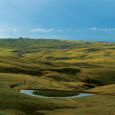
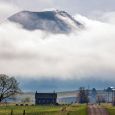
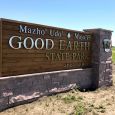
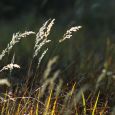
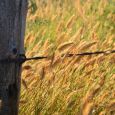



Comments